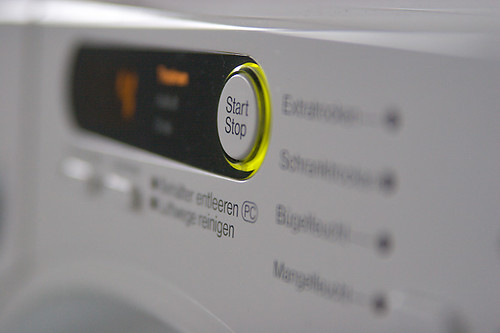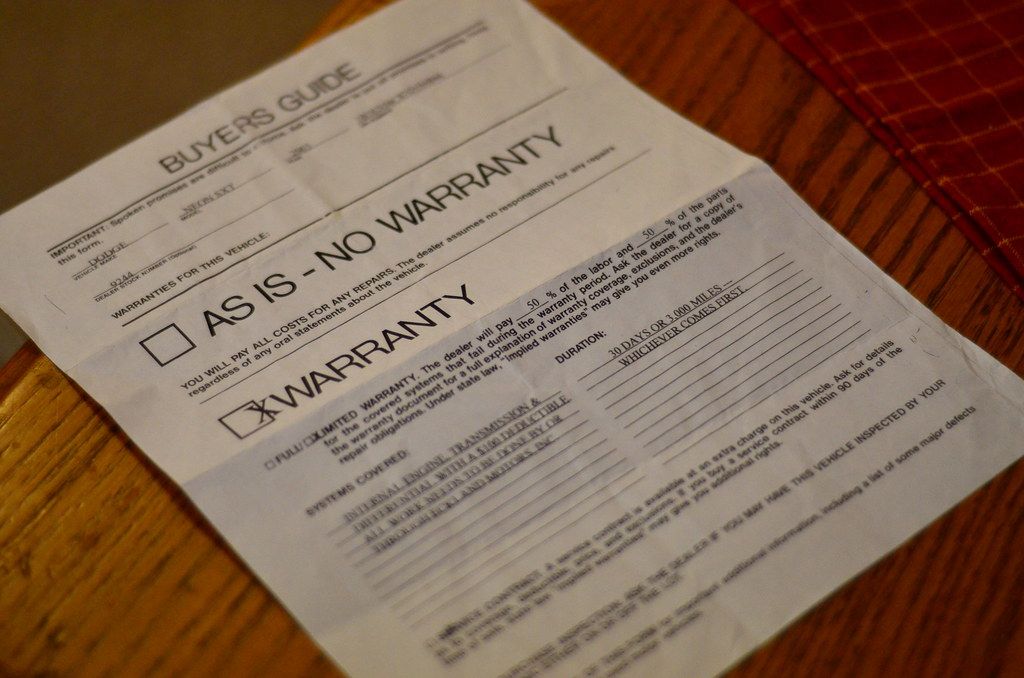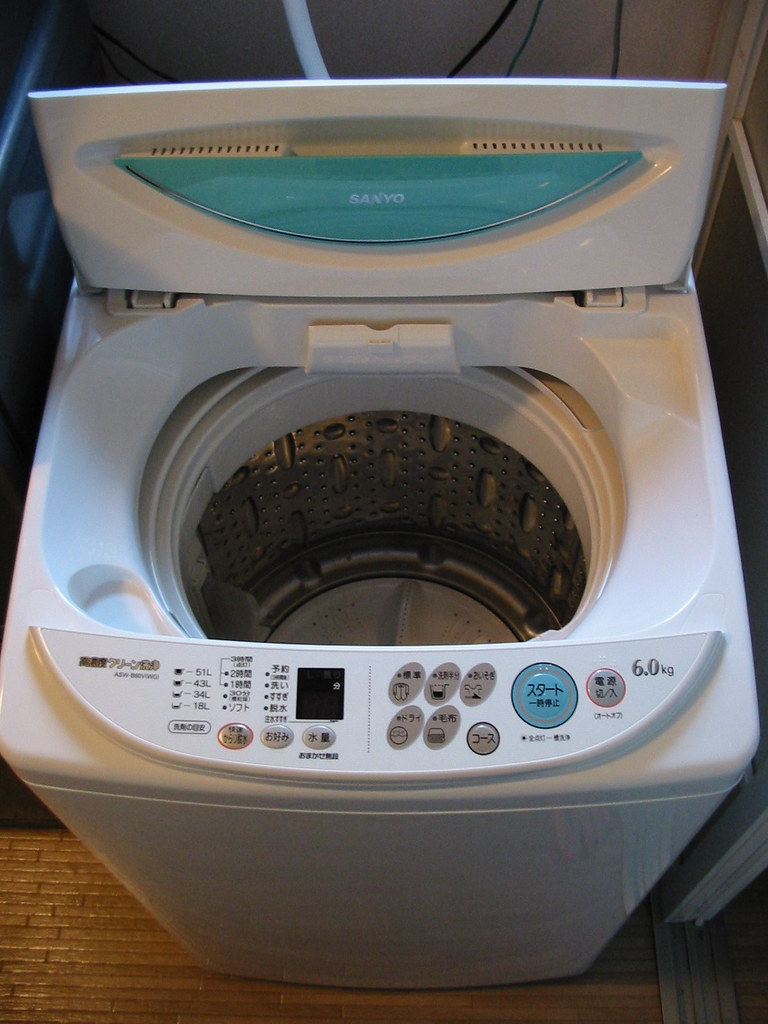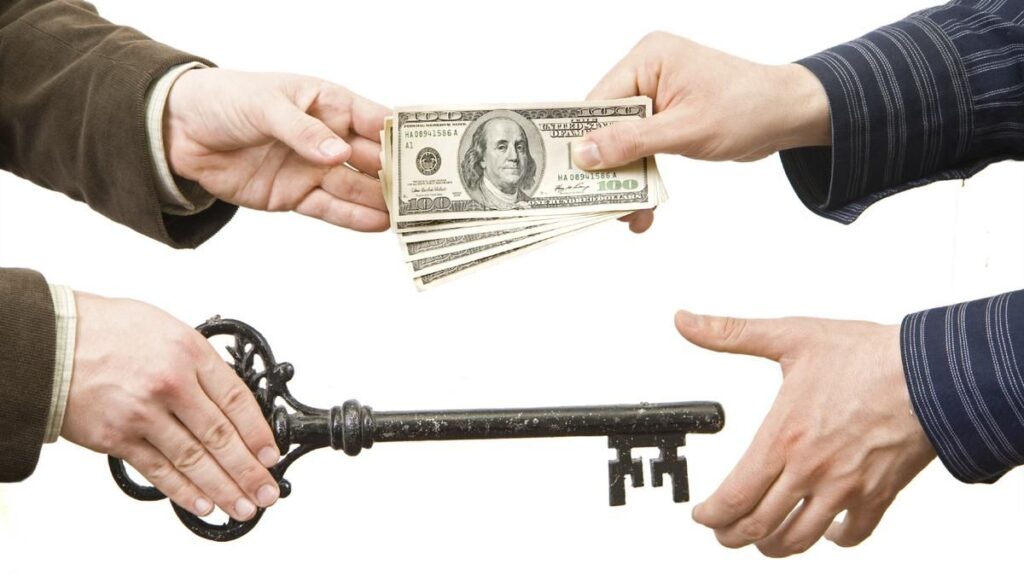
Purchasing a new washing machine and dryer represents a significant household investment, much like acquiring other major appliances such as dishwashers, ovens, or refrigerators. Given the substantial cost involved, it’s natural for consumers to seek out the best possible deals, ensuring they get top-notch performance without breaking the bank. While sometimes the urgency of a broken machine dictates an immediate purchase, a little strategic planning can lead to considerable savings.
Your current washer and dryer often provide clear indicators when they are nearing the end of their useful life, such as failing to clean or dry clothes effectively, or receiving a cautionary note from a repair technician. If you find yourself with this valuable “wiggle room” before your old units completely give out, you are in a prime position to leverage market dynamics and secure an excellent deal. Understanding these cycles and expert recommendations is key to making an informed and financially savvy decision.
The good news is that securing a significant discount on a high-quality washer and dryer is not a rare occurrence that you might have already missed. In fact, there are multiple identifiable periods throughout the year when retailers offer substantial price reductions. While some discounts may be more generous than others, knowing when to look can transform a routine purchase into a smart financial move. Let’s explore these opportune moments and strategies to help you navigate the market.

1. **Strategic Timing: Major Holiday Sales Events**When it comes to securing the steepest discounts on major appliances, holiday weekends consistently emerge as prime opportunities. These events are hard to miss, with advertisements prominently featuring promotional offers, and savvy shoppers would do well to pay attention. Retailers frequently roll out significant savings during these periods, attracting consumers with the promise of reduced prices on high-value items.
Key holiday shopping weekends such as Memorial Day, Labor Day, Black Friday, New Year’s, and Presidents Day are consistently highlighted by experts like Kristen Gall, a retail and shopping expert with Rakuten, as ideal times to find washers and dryers on sale. Among these, Labor Day often stands out as offering some of the most competitive deals. Historically, Memorial Day, Labor Day, and Black Friday are cited as times when most appliances can be found at great prices, with Black Friday and Cyber Monday discounts averaging around 34% on major appliances.
These annual sales cycles are not merely arbitrary promotions; they are integral to retailers’ strategies to move inventory and meet sales goals. Presidents’ Day in February often initiates the holiday sale calendar, providing early savings. Memorial Day in May frequently brings another wave of promotions, sometimes offering discounts of 15% to 30% on laundry sets. Independence Day in July also presents opportunities for deals, occasionally including incentives for purchasing multiple appliances.
Read more about: Your Ultimate Guide: 14 Lifehacker Strategies to Get the Absolute Best Price on a New Car

2. **Manufacturer Release Cycles: Capitalizing on New Models**Another critical factor influencing appliance pricing is the manufacturer’s cycle of new model releases. Just as with other consumer electronics and vehicles, appliance brands periodically introduce updated versions of their products, and this creates a beneficial window for consumers. Manufacturers typically unveil their new laundry unit models in the fall, specifically around September and October. This timing allows retailers to stock their shelves with the latest offerings in anticipation of the crucial holiday shopping season.
As new models arrive, retailers face the challenge of needing to clear out their existing inventory of older units to make space. This necessity often translates into significant price reductions on the outgoing stock. Shoppers who are open to purchasing a slightly older model can benefit immensely. The reality is that “year-to-year upgrades are typically limited to style and features,” meaning that acquiring last year’s model will generally “not put you at a functional disadvantage” while offering considerable savings.
Kristen Gall, a retail and shopping expert, emphasizes that “Appliance brands tend to release new models during the fall season, meaning that retailers have to move out the previous inventory of products in order to make room for newer models.” This means that those “slightly older models of washers and dryers will be on sale right before or right when the new ones come out.” Conversely, if you desire the absolute newest model, it’s wise to “suggest waiting a bit and making your purchase after the price goes down,” as initial release prices are generally at their highest.

3. **End-of-Month and Quarterly Deals: Retailer Quotas**Beyond the predictable calendar of major holidays and new model introductions, another less conspicuous but often effective time to find savings is at the end of the month. Some retailers, driven by the need to meet specific sales quotas, may offer special deals during these periods. This can be a strategic move on their part to push inventory and achieve targets before the month concludes.
While these end-of-month sales might not be as widely advertised or as consistently robust as major holiday promotions, they can still present opportunities for a savvy shopper. However, it’s worth noting that relying solely on these sporadic end-of-month deals might not yield the same level of savings or certainty as planning around a holiday weekend. Gall suggests that “you’ll likely score a better deal during a holiday weekend instead of waiting and hoping for an end-of-month sale,” indicating that while these opportunities exist, they are secondary to larger, more predictable events.
Nevertheless, if your timing is flexible and you happen to be shopping towards the end of a month, it doesn’t hurt to inquire about potential discounts or promotions. A salesperson, eager to meet a quota, might be able to “tack on an additional discount to motivate you further,” especially if they are trying to meet sales targets. This makes being prepared and asking about current incentives a worthwhile endeavor, even if the primary focus remains on the larger sales events.

4. **Specific Months for Deals: Leveraging Calendar Insights**While holiday weekends and new model releases offer clear buying windows, various sources also highlight specific months throughout the year when deals on washers and dryers are more prevalent. These periods often align with inventory clearance efforts or broader seasonal trends that retailers leverage to move products. Consulting expert calendars can provide additional precision to your shopping strategy.
James McQueen, a senior communications specialist at Consumer Reports, suggests utilizing the consumer watchdog’s “Best Time to Buy Calendar.” According to this calendar, July, September, and November are identified as particularly advantageous months for purchasing washers and dryers. These months often coincide with inventory clearance for new models (September) or significant shopping events (November for Black Friday).
Furthermore, the spring and early summer months, specifically from April to July, are also cited as periods where consumers “might find great deals too.” Gall explains that “Retailers look at this time of year as their opportunity to ‘clean house’ and rid their warehouses of precious inventory space.” This suggests a consistent pattern of clearance sales throughout the year, not just tied to single events. ClarkDeals.com also reports seeing the “most deals on washers and dryers in April,” leading up to Memorial Day, and again beginning “as early as September” and around Black Friday in November.

5. **Understanding the “Worst” Times to Buy: Avoiding Pitfalls**Just as there are optimal times to make a purchase, there are also periods when buying a new washer and dryer should ideally be avoided to prevent overpaying. While circumstances sometimes necessitate an immediate purchase, being aware of these less favorable windows can help you save money if you have any flexibility in your timing. Avoiding these periods is crucial for maximizing your investment.
One of the primary times to steer clear of is “right after a new model is released.” As Kristen Gall notes, if your goal is to acquire the latest model, this is precisely when prices will be at their highest. Manufacturers typically set premium prices for their newest innovations, which gradually decrease over time as market saturation increases and newer iterations are anticipated. Waiting a bit after the initial release can lead to substantial savings on the same new model.
The “tricky part is timing it right.” If you don’t wait for the “model changeover,” you risk “paying too much for an older model that will likely be discounted in another few weeks.” This highlights the importance of patience and research. Another unfortunate “worst time to buy” can be “during supply chain issues.” James McQueen observes that “actual deals on large appliances have been lackluster since the pandemic hit,” as “resulting supply chain issues have kept many items at a premium,” meaning fewer discounts and higher base prices for consumers.

6. **Extending Appliance Lifespan: Maintenance and Replacement Cues**Before diving into the market for a new washer and dryer, it’s prudent to understand the typical lifespan of these appliances and recognize the signs that indicate an impending need for replacement. This knowledge empowers you to plan proactively rather than reacting to an unexpected breakdown, giving you the luxury of timing your purchase for the best deals. Proper care can also significantly extend the life of your current units.
Kristen Gall states that, while variations exist based on “brand, model and frequency of use,” the “average life span of a washer is anywhere from 10 to 14 years,” and for a dryer, it’s “10 to 13 years.” This provides a general benchmark for how long you can reasonably expect your appliances to perform. Knowing this range allows you to estimate when your units might start showing signs of age and when you should begin monitoring the market for sales.
Crucially, your machines will often provide “signs that they’re on their way out.” These include when they “stop washing or drying clothes properly, or when your repair person gives you a warning.” Recognizing these indicators early gives you the “wiggle room in terms of timing” to shop strategically. Learning “how to clean your washer and dryer properly can also help them last longer,” delaying the need for an immediate, unplanned replacement and preserving your ability to capitalize on sales cycles.

7. **Smart Shopping Strategies: Comparing Retailers and Prices**Once you’ve identified the optimal times to buy, the next crucial step is to implement smart shopping strategies to ensure you’re getting the absolute best price available. Simply walking into the first store you see or clicking on the first online advertisement can lead to missed savings. Comprehensive comparison shopping is a non-negotiable step for any consumer serious about value.
Gall advises, “The first store you visit might have the best price—or it might not. Gall suggests shopping around to see what various retailers are offering.” She elaborates that “Some may have discount codes you can use, and some may be having special weekend sales.” Moreover, in physical stores, “sometimes a salesperson can tack on an additional discount to motivate you further,” especially if they are trying to meet sales targets.
Major appliance sellers like Best Buy, Lowe’s, and Home Depot often offer “price-match identical items,” with Lowe’s and Home Depot even providing “10% off competitor prices on similar appliances.” Best Buy also extends this to “online price matching with competitors like Amazon if you do find a better deal on the same product.” Utilizing tools like “Google Shopping to compare prices among retailers” is highly recommended to “really make sure you’re getting the best deal.” ClarkDeals.com also notes that they’ve “seen price differences of over $100 between stores after deals and discounts,” underscoring the value of diligent comparison.
As we’ve established the optimal timings and initial comparison strategies for purchasing a new washer and dryer, it’s time to delve deeper into advanced saving tactics and critical financial wisdom that can further enhance your investment. This section moves beyond the calendar, focusing on astute purchasing decisions, budgeting considerations, and alternative avenues to secure maximum value and long-term satisfaction from your essential household appliances. By integrating these insights, you can navigate the market with even greater confidence and ensure your new laundry set is both high-performing and budget-friendly.
Read more about: Ebike Prices Are Rising: Your Essential Guide to Smart Shopping, Identifying Value, and Securing Unbeatable Deals Before 2025’s Tariff Hikes

8. **Other Advanced Saving Tactics: Avoiding Extended Warranties**When making a significant purchase like a new washer and dryer, retailers often present the option of an extended warranty, promising peace of mind and protection for your investment. However, money expert Clark Howard offers a different perspective, famously stating: “Salespeople will tell you that an extended warranty ‘protects your investment,’ but a TV, a washer or a DVD player is not an investment.” This challenges the common perception and encourages consumers to reconsider the true value these warranties provide, often citing their high cost relative to the actual likelihood of major repair.
Instead of relying on costly extended warranties, a more pragmatic approach involves proactive research into product reliability. Consumers are advised to look at their chosen model’s record of reliability and actively seek out brands and models that are historically known for their durability and fewest issues. This diligence helps to mitigate the need for extra coverage, as a truly reliable appliance is less likely to break down unexpectedly within the period an extended warranty would cover.
By focusing on the inherent quality and reliability of the appliance itself, you adopt a far more effective strategy for long-term satisfaction and cost savings. This shifts the focus from insuring against potential failures to investing in products that are less prone to needing extensive repairs in the first place. Therefore, prioritizing models with strong reliability ratings, often found through independent consumer reviews and reports, can provide greater peace of mind without incurring additional, often unnecessary, expenses for extended coverage. Clark Howard’s advice is clear: avoid the warranty and instead, invest in quality from the start.
Read more about: Navigating New Car Warranties: Spotting the Best, Understanding Manufacturer Challenges, and Avoiding Costly Pitfalls

9. **Leveraging Credit Card Warranties for Peace of Mind**For consumers seeking an added layer of protection without the expense of a traditional extended warranty, certain credit card benefits offer a clever solution. Many credit cards, particularly those with premium benefits, provide an automatic extension of the manufacturer’s warranty when you make a purchase using that card. This often means that the original factory warranty, which typically lasts for a year or two, can be doubled for eligible items, offering significant extended protection.
This invaluable perk is essentially free insurance, providing you with additional coverage for a longer period than the standard manufacturer’s offering. It’s a smart way to give yourself extra peace of mind concerning your appliance’s longevity and performance without having to spend anything extra on a separate warranty plan. Before making a major purchase, it is highly recommended to review the specific terms and conditions of your credit card’s benefits, as policies can vary.
Understanding and utilizing these built-in credit card benefits is a testament to savvy consumerism. It transforms your regular purchase into an even smarter financial move, ensuring that you’re protected against unexpected issues for an extended duration, all at no additional upfront cost. This tactic aligns perfectly with the goal of maximizing value and long-term satisfaction from your washer and dryer investment by using existing resources wisely.
Read more about: The True Cost of ‘Peace of Mind’: 13 Critical Reasons Why Extended Warranties for Your Appliances Are Rarely Worth It

10. **Exploring “Scratch and Dent” Appliances for Deep Discounts**For those who prioritize functionality over pristine aesthetics, “scratch and dent” appliances represent an exceptional opportunity for substantial savings. These are brand-new units that have sustained minor cosmetic damage, such as a scuff, a small dent, or a slight discoloration. Such imperfections typically occur during shipping, warehousing, or even display, and crucially, they do not affect the appliance’s performance in any way, ensuring full operational capacity.
Because these units are not “perfect” visually, retailers often offer them at significantly reduced prices to clear inventory. The discounts can be quite substantial, with context indicating they typically range from 15% to 50% off the retail price, making a premium model surprisingly affordable. This makes them a highly attractive option for budget-conscious buyers who are willing to overlook minor cosmetic flaws in exchange for a powerful, fully functional appliance at a fraction of the cost.
Considering that washers and dryers typically aren’t the focal point of a room, a small cosmetic imperfection often goes unnoticed in the grand scheme of a laundry area or utility room. The financial advantage of buying a “scratch and dent” unit far outweighs the minor aesthetic compromise for many households, directly translating into hundreds of dollars in savings. It’s a pragmatic choice that delivers excellent value for your money.
When exploring this option, it’s always wise to carefully inspect the unit in person to ensure that any damage is indeed purely cosmetic and doesn’t impact critical components or future performance. Look for damage on areas that are less visible once installed, such as sides or the back. A thorough check can confirm you’re getting a great deal on a fully working appliance, simply because it has a minor blemish.

11. **Considering Used Appliances from Online Marketplaces**For consumers operating on a very tight budget or seeking highly affordable solutions, the realm of used appliances offers compelling possibilities. Online platforms such as Craigslist or Facebook Marketplace have become popular venues where individuals can find lightly used washers and dryers. These marketplaces can yield significantly lower prices compared to even discounted new models, presenting a pathway to acquire functional appliances without a hefty financial outlay, particularly when a machine is needed quickly and cost is the primary driver.
The appeal of these platforms lies in the potential for steep savings, particularly on units that are still in good working condition but are being sold by owners upgrading or moving. However, this avenue comes with its own set of considerations and risks that must be carefully evaluated. A crucial caveat to keep in mind is that “you’ll be hauling and installing them yourself!” This means factoring in the logistics of transportation, heavy lifting, and proper connection, which may require additional time, effort, or even professional help.
Furthermore, unlike new purchases, used appliances typically come without warranties or guarantees, meaning any future breakdowns would be entirely at your expense. Therefore, thoroughly inspecting the appliance before purchase is paramount. Consumers should check for visible wear and tear, listen for unusual noises during operation if possible, and inquire about its service history.
While the financial benefits of buying used can be substantial, consumers must be prepared for the practicalities and potential risks involved. Ensuring you have the means for safe transport and proper installation, coupled with a diligent inspection process, are essential steps to make this saving tactic a successful one. It offers a viable alternative for those prioritizing extreme cost savings and who are comfortable with the DIY aspects of acquisition and potential future repairs.

12. **New vs. Used: Making the Right Investment Choice**A fundamental decision when acquiring laundry appliances revolves around whether to invest in a brand-new unit or opt for a used one. This critical choice hinges on several personal factors, primarily how long you anticipate keeping the machines and your expected frequency of use. Kristen Gall, a retail and shopping expert, provides a clear guideline for this dilemma, helping consumers align their purchase with their long-term household needs and financial goals.
Gall advises that if you are “planning to use it for the next several years,” then “I would recommend investing in a new one.” This recommendation underscores the significant value of durability, advanced features, and reliability that typically come with new appliances, particularly when viewed as a long-term household staple. New units often boast the latest in energy efficiency, innovative cleaning technologies, and come backed by a manufacturer’s warranty, providing a solid return on investment and peace of mind over their extensive lifespan.
The advantages of new appliances extend beyond mere functionality; they include lower energy consumption, quieter operation, and access to smart features that enhance convenience. While the initial outlay is higher, the long-term benefits in terms of performance, reduced utility bills, and fewer repair concerns can justify the investment for sustained household use. This choice ensures you receive the most up-to-date technology and a full warranty for protection.
Conversely, if your usage will be short-term or infrequent—perhaps for a temporary living situation, a rental property, or a secondary residence—a used appliance might present a more cost-effective immediate solution. However, for the enduring functionality, efficiency, and peace of mind associated with a primary household workhorse, a new washer and dryer generally prove to be the more prudent long-term investment. This decision ultimately balances initial cost with anticipated longevity, performance expectations, and ongoing operational expenses.

13. **Smart Budgeting: How Much to Expect to Spend on a New Set**Before embarking on your shopping journey for a new washer and dryer, establishing a clear and realistic budget is paramount. Understanding the financial landscape for these major appliances will help you manage expectations, narrow down your options, and make an informed decision without overextending your household finances. Kristen Gall provides valuable insights into the typical price ranges consumers should anticipate, offering a realistic framework for your budgeting wisdom.
According to Gall, “Overall, you should be prepared to spend at least $1,000 on a new washer and dryer,” if you’re looking for a complete set of both units. This figure represents an entry-level expectation for a functional and reliable pair, capable of handling basic laundry needs effectively. It’s a good starting point for ensuring you get a decent quality appliance without necessarily opting for all the bells and whistles.
However, the market for laundry appliances spans a wide spectrum of features, capacities, and brands. Higher-end models, which often boast advanced features like steam cleaning, smart connectivity, larger drum sizes, or premium designs and finishes, “could cost upward of $2,000 for the set.” These elevated price points typically reflect enhanced performance, greater durability, specialized cycles, and sometimes even superior energy efficiency.
Therefore, your budget should be flexible enough to accommodate your desired features, the quality you seek, and any specific brand preferences. It’s crucial to balance initial cost with anticipated performance, energy efficiency, and long-term value. Within your determined budget, Gall also suggests making sure to “consider options from these reliable appliance brands,” ensuring that your financial outlay translates into a durable and satisfactory purchase. Effective budgeting, combined with strategic timing and smart shopping, ultimately ensures you make the best possible investment for your home.
Read more about: The Great American Road Trip Renaissance: Why Highways Are Conquering the Skies in 2025
Purchasing a new washing machine and dryer, while a significant expenditure, doesn’t have to be an overwhelming one. By combining strategic timing with advanced saving tactics and sound budgeting, consumers can navigate the market confidently. Whether it’s bypassing unnecessary extended warranties, capitalizing on credit card perks, embracing “scratch and dent” opportunities, or making an informed choice between new and used, every decision contributes to securing optimal value. Ultimately, armed with thorough research and a clear financial plan, you are well-equipped to make an appliance investment that provides reliable service and long-term satisfaction for your household.



